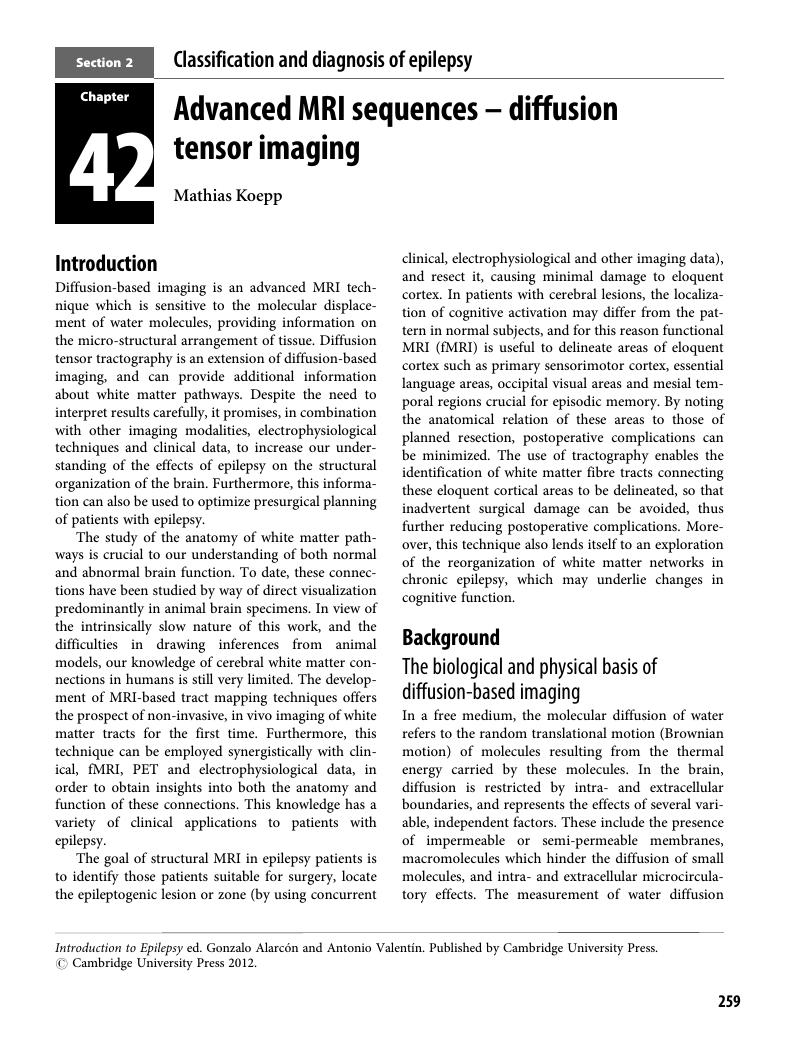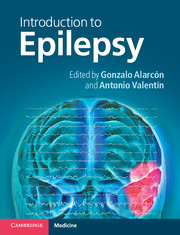Book contents
- Introduction to Epilepsy
- Introduction to Epilepsy
- Copyright page
- Dedication
- Contents
- Contributors
- Foreword
- Preface
- Acknowledgements
- Section 1 Basic principles
- Section 2 Classification and diagnosis of epilepsy
- Chapter 17 Electroclinical classification of seizures and syndromes
- Chapter 18 Clinical use of EEG in epilepsy
- Chapter 19 General overview of epileptic syndromes in childhood and adolescence
- Chapter 20 Neonatal seizures
- Chapter 21 Epileptic encephalopathies in the first year of life
- Chapter 22 Epileptic encephalopathies in early childhood
- Chapter 23 Febrile convulsions/seizures and related epileptic syndromes
- Chapter 24 Idiopathic focal epilepsies
- Chapter 25 The idiopathic generalized epilepsies
- Chapter 26 Temporal lobe epilepsy
- Chapter 27 Frontal lobe epilepsy
- Chapter 28 Parietal and occipital focal symptomatic epilepsies
- Chapter 29 Epilepsy and myoclonus
- Chapter 30 Progressive myoclonic epilepsies
- Chapter 31 Acute symptomatic seizures
- Chapter 32 EEG in neonates and children
- Chapter 33 Applications of EEG other than epilepsy
- Chapter 34 Evoked potentials in epilepsy
- Chapter 35 Introduction to neuroimaging and relevant anatomical landmarks
- Chapter 36 The role of structural imaging in the assessment of epilepsy
- Chapter 37 Indications for neuroradiological investigation of epilepsy
- Chapter 38 Volumetric MRI and MRI spectroscopy
- Chapter 39 Functional MRI in epilepsy
- Chapter 40 SPECT in epilepsy
- Chapter 41 PET in epilepsy
- Chapter 42 Advanced MRI sequences – diffusion tensor imaging
- Chapter 43 EEG-correlated fMRI in epilepsy
- Chapter 44 Source localization methods
- Chapter 45 Magnetoencephalography in epilepsy
- Chapter 46 History-taking and physical examination in epilepsy
- Chapter 47 The role of video-EEG monitoring in epilepsy
- Chapter 48 Cardiovascular syndromes simulating epilepsy
- Chapter 49 Sleep disorders simulating epilepsy
- Chapter 50 Psychiatric disorders mistaken for epilepsy
- Chapter 51 Differential diagnosis of epilepsy: migraine and movement disorders
- Chapter 52 Differential diagnosis of epilepsy in children
- Chapter 53 Investigation of newly diagnosed and chronic epilepsy in adults
- Chapter 54 The role of investigations in the management of epilepsy in children
- Chapter 55 Case scenarios in paediatric epilepsy
- Chapter 56 Psychogenic non-epileptic seizures: diagnostic approach
- Chapter 57 Seminar: paediatric EEG reporting session
- Section 3 Epidemiology
- Section 4 Genetics of epilepsy
- Section 5 Management of epilepsy
- Section 6 Epilepsy in specific circumstances
- Section 7 Psychiatric, social and legal aspects
- Index
Chapter 42 - Advanced MRI sequences – diffusion tensor imaging
from Section 2 - Classification and diagnosis of epilepsy
Published online by Cambridge University Press: 05 July 2012
- Introduction to Epilepsy
- Introduction to Epilepsy
- Copyright page
- Dedication
- Contents
- Contributors
- Foreword
- Preface
- Acknowledgements
- Section 1 Basic principles
- Section 2 Classification and diagnosis of epilepsy
- Chapter 17 Electroclinical classification of seizures and syndromes
- Chapter 18 Clinical use of EEG in epilepsy
- Chapter 19 General overview of epileptic syndromes in childhood and adolescence
- Chapter 20 Neonatal seizures
- Chapter 21 Epileptic encephalopathies in the first year of life
- Chapter 22 Epileptic encephalopathies in early childhood
- Chapter 23 Febrile convulsions/seizures and related epileptic syndromes
- Chapter 24 Idiopathic focal epilepsies
- Chapter 25 The idiopathic generalized epilepsies
- Chapter 26 Temporal lobe epilepsy
- Chapter 27 Frontal lobe epilepsy
- Chapter 28 Parietal and occipital focal symptomatic epilepsies
- Chapter 29 Epilepsy and myoclonus
- Chapter 30 Progressive myoclonic epilepsies
- Chapter 31 Acute symptomatic seizures
- Chapter 32 EEG in neonates and children
- Chapter 33 Applications of EEG other than epilepsy
- Chapter 34 Evoked potentials in epilepsy
- Chapter 35 Introduction to neuroimaging and relevant anatomical landmarks
- Chapter 36 The role of structural imaging in the assessment of epilepsy
- Chapter 37 Indications for neuroradiological investigation of epilepsy
- Chapter 38 Volumetric MRI and MRI spectroscopy
- Chapter 39 Functional MRI in epilepsy
- Chapter 40 SPECT in epilepsy
- Chapter 41 PET in epilepsy
- Chapter 42 Advanced MRI sequences – diffusion tensor imaging
- Chapter 43 EEG-correlated fMRI in epilepsy
- Chapter 44 Source localization methods
- Chapter 45 Magnetoencephalography in epilepsy
- Chapter 46 History-taking and physical examination in epilepsy
- Chapter 47 The role of video-EEG monitoring in epilepsy
- Chapter 48 Cardiovascular syndromes simulating epilepsy
- Chapter 49 Sleep disorders simulating epilepsy
- Chapter 50 Psychiatric disorders mistaken for epilepsy
- Chapter 51 Differential diagnosis of epilepsy: migraine and movement disorders
- Chapter 52 Differential diagnosis of epilepsy in children
- Chapter 53 Investigation of newly diagnosed and chronic epilepsy in adults
- Chapter 54 The role of investigations in the management of epilepsy in children
- Chapter 55 Case scenarios in paediatric epilepsy
- Chapter 56 Psychogenic non-epileptic seizures: diagnostic approach
- Chapter 57 Seminar: paediatric EEG reporting session
- Section 3 Epidemiology
- Section 4 Genetics of epilepsy
- Section 5 Management of epilepsy
- Section 6 Epilepsy in specific circumstances
- Section 7 Psychiatric, social and legal aspects
- Index
Summary

- Type
- Chapter
- Information
- Introduction to Epilepsy , pp. 259 - 265Publisher: Cambridge University PressPrint publication year: 2012

